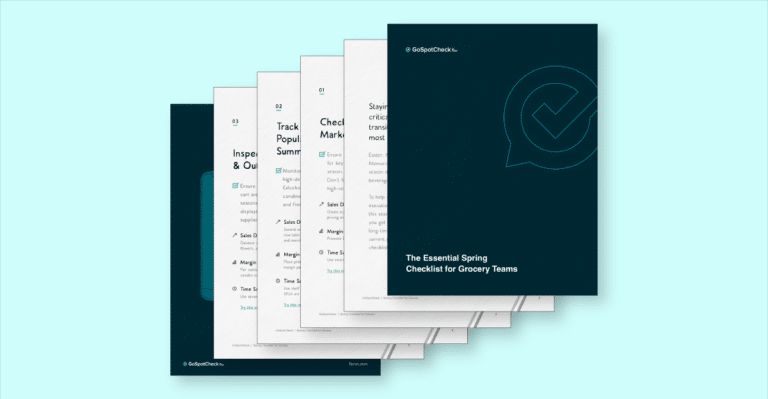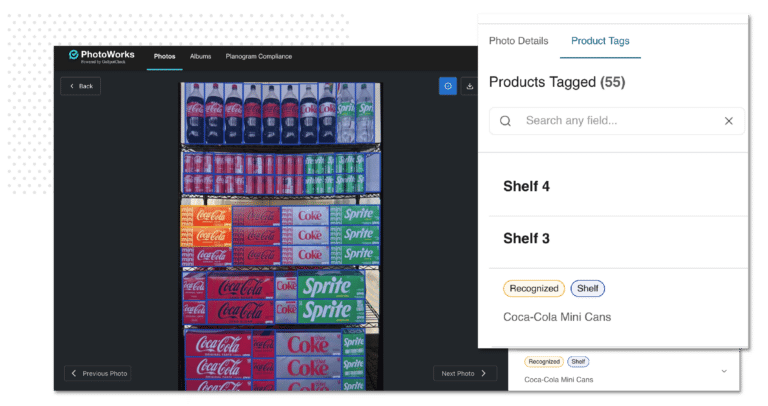Choosing Between Inside Sales and Outside Sales for Your Organization
When establishing a sales strategy, organizations typically operate their field sales based on an inside sales model or an outside sales model. Inside sales, also called remote sales, is done entirely from the office (or in today’s world, the seller’s home) and involves digital methods of communication to contact leads, like email, phone calls, and web-based technologies. Outside sales consist of more traditional mediums of selling to prospects, such as face-to-face meetings and in-person seminars.
Though still distinct, the lines between inside and outside sales have been obscured by both digital innovations and the COVID-19 pandemic. Mediums that were traditionally outside sales—like trade shows and in-person field sales—have become virtual and have begun to resemble inside sales.
Within the concepts of inside sales and outside sales, most organizations develop selling strategies—documented plans for positioning and selling a product or service and differentiating it from competitor offerings. A selling strategy should serve as a repeatable framework that, when done right, enables sales teams to:
- Identify customer needs
- Create a sense of desire for a product or service
- Present a solution that solves buyers’ most pressing pain points
These selling strategies can fall under either inside or outside sales and, because of today’s technological environment, can often be both.
With the advancement of technology, consumers have grown savvier, and getting a strategy right has become increasingly complex for sales representatives. Thanks to all-powerful search engines and an endless stream of free digital content, potential buyers can find answers to their biggest questions — and shop for a solution that meets their needs — more quickly and easily than ever before.
This is especially true in day-to-day sales for consumer packaged goods (CPG), where representatives are tasked with fostering long-term relationships with prospects while keeping track of inventory, coordinating with supply chain stakeholders, and all the other time-sensitive work crucial to this industry.
So, how can organizations determine a successful field sales selling strategy and balance between inside and outside sales?
Six Selling Strategies for Sales Teams to Consider
Teams and sales reps don’t have to reinvent the wheel when selling in the field. In fact, there are several tried-and-true strategies that brands have relied on for decades. Each of these selling types can be categorized as an inside sales method or an outside sales method, and some adopt elements from both. Determining the right strategy is not a one-size-fits-all approach; it often depends on the unique characteristics of your company and the products you sell.
Let’s take a look at some of the most common selling strategies today’s sales reps leverage in pursuit of higher profits and more satisfied customers.
1. What is Transactional Selling?
Transactional selling is perhaps the simplest, most straightforward sales strategy in the books. This approach focuses on the short-term. Reps prioritize making quick sales and typically steer clear of buyer-selling relationship building.
In today’s highly personalized, competitive marketplace, a transactional selling strategy can get a bad rap. However, it can still be the right one in certain contexts. That’s because even though the actual sales process is relatively hands-off for sales reps, customer-centricity is still a must-have element for success. When done right, it increases engagement and helps answer customer questions without active intervention on the part of the sales rep.
Sales and marketing teams can draw insights from customer feedback and past interactions to target key challenges and build a self-service solution — like a knowledge base, product demo, or downloadable guide. No matter what these deliverables look like, they should center around a single goal: giving consumers all the information they need to make a purchasing decision without running into any roadblocks along the way.
Is It For Inside Sales, Outside Sales, Or Both?
Transactional selling focuses on one-time sales and often has a short sales cycle, meaning that potential customers are typically reached remotely for the fastest results. This could be via phone call, LinkedIn message, or in many cases, a response to someone who has expressed interest through forms or website visits. Because of the quick, remote nature of transactional selling, this sales strategy falls under inside sales.
Who Does It Work Best For?
Brands that sell low-cost, generic products to buyers that want quick, self-serve options.
2. What is Relationship Selling?
Relationship selling, also known as partnership selling, prioritizes building a relationship with potential buyers to close sales. Unlike transactional approaches that focus on selling a product by emphasizing price points, relationship selling tackles the long game.
In CPG sales, relationship building can make or break success since companies need to bring in recurring revenue and frequently replenish consumer goods. A relationship-focused selling strategy gives reps the opportunity to build trust with buyers over time and deliver long-term value as a strategic partner.
This selling strategy also encompasses channel partnerships, where suppliers and resellers collaborate to sell a solution to their end customers. A relationship-based field sales selling strategy is especially valuable in today’s high-demand sales landscape as it produces better results than the common strategy of inside sales reps making cold calls followed by slow-and-steady lead nurturing.
Is It For Inside Sales, Outside Sales, Or Both?
Since relationship selling is all about reps prioritizing their relationship with the prospect, it relies more on outside sales. However, since the pandemic forced many methods of in-person connections to move online, outside sales teams have begun to use many elements of traditional inside sales for relationship selling.
Who Does It Work Best For?
Brands that sell a high volume of products to multiple buyers on a recurring basis.
Startups that need to scale in new geographies and markets at a rapid pace.
3. What is Solution Selling?
As the name suggests, solution selling focuses on the outcome or solution a product provides, rather than highlighting specific features or price points. This sales strategy leans heavily on pain points, so sales reps typically start by articulating a problem or challenge, then illustrating the benefits a buyer would enjoy if that problem were to be solved — by their solution, of course.
Solution selling has the potential to capture prospects’ attention and introduce an emotional hook, but it’s often easier said than done in the world of field sales. There are several drawbacks to this strategy, especially considering the level of expertise sales representatives need to paint a picture that will persuade their buyers.
The need for extensive training, sales enablement resources, and an intangible knack for storytelling makes it challenging for brands to implement solution selling strategies at scale and give reps repeatable frameworks to follow. Plus, a 2019 McKinsey report found that solution sellers don’t perform much better than their transactional counterparts.
Is It For Inside Sales, Outside Sales, Or Both?
Depending on the product being sold, solution selling can fall under both inside and outside sales. For B2B SaaS sales, solution selling typically involves product tours, case studies, and account based marketing, all of which fall more under inside sales.
Who Does It Work Best For?
Brands that deliver a holistic service or product backed by expert sales reps that can articulate its value to potential buyers.
4. What is Consultative Selling?
Similar to solution selling, consultative sales strategies also steer clear of feature-focused conversations. However, they go a step beyond solution selling to put the ball in the buyer’s court. Consultative selling incorporates all the elements of solution sales but caters to customers that can identify potential solutions to their problems on their own.
While solution selling was highly effective pre-Google, today’s shoppers — even the enterprise B2B ones — have the tools and resources they need to solve their own problems. So rather than simply drawing a line from problem to solution, consultative reps have learned to transition to a more inside sales approach to cater to the fast-changing world—relying on a combination of user data, customer insights, and connected data to create a personalized buyer’s journey.
Consultative selling is all about putting a product or service in context for buyers, which means it needs the support of a skilled sales team that’s not afraid to take a data deep-dive to understand their audience and infer their purchasing behaviors.
Is It For Inside Sales, Outside Sales, Or Both?
Similar to relationship selling, consultative selling is all about knowledge-based trust. In today’s digital world, that trust is created through inside sales techniques like calls and emails combined with valuable deliverables and insights.
Who Does It Work Best For?
Brands that manage big-ticket deals across long sales cycles and a high-touch buyer’s journey.
5. What is Collaborative Selling?
Just like its relationship- and consultative-based counterparts, collaborative selling strategies are all about establishing a strong buyer-seller connection. Collaborative selling requires reps to gain an in-depth understanding of their buyer’s needs, challenges, and goals, then craft a customer-centric narrative to drive home their next deal.
Collaborative selling is designed to help buyers navigate complex challenges and an equally intricate buying process. In this scenario, they are an active participant in the sales process. Buyers work alongside a team of sales reps to identify and implement solutions to achieve strategic objectives and drive results across multiple sectors of their business.
To make this sales strategy successful, an organization must align all customer-facing teams behind the same goals and data insights, then ensure they collaborate with one another to deliver ongoing value for their consumers. It sets both buyer and salesperson up for success, helping them develop a long-term, symbiotic relationship rather than fostering a one-and-done transaction.
Is It For Inside Sales, Outside Sales, Or Both?
In another similarity to relationship selling and consultative selling, collaborative selling also uses techniques from both inside and outside sales to succeed.
Who Does It Work Best For?
Brands with expert outside sales reps that deliver long-term engagements with cross-selling and upselling opportunities.
6. What is Social Selling?
The term “social selling” often evokes memories of spammy direct messages or an ad on your newsfeed for a product you’ve never heard of. However, social selling isn’t the same as social advertising or even social media marketing. While those tactics focus on making a sale directly on a social platform, social selling is more about the long game.
In short, social selling strategies focus on building long-term customer relationships through social media interactions that aren’t sales-heavy. Think commenting on a post, sharing another brand’s thought leadership content, or responding to potential customers when they leave a note on your Facebook wall.
Social selling is an effective practice of using brand channels to connect with potential customers, then nurturing that connection over time. It’s about fostering meaningful interactions, subtly promoting your products, and building trust with your target audience — in the hopes that they’ll eventually become loyal customers.
Is It For Inside Sales, Outside Sales, Or Both?
Social selling falls under inside sales as it relies heavily on in-house sales teams forging connections through online channels.
Who Does It Work Best For?
Brands with social media-savvy buyers and an inside sales team that can manage social interactions.
How to Choose the Right Field Sales Selling Strategy
There are a lot of ways to go about selling your product and growing your brand. And while all of the strategies listed above deliver top-notch results in the right context, some are better suited to CPG field sales than others.
The right sales strategy should use a combination of both inside and outside sales techniques to inform and connect with potential customers. It’s also important to note that COVID-19 has significantly blurred the lines between the two selling strategies. As people are becoming more comfortable with connecting virtually, face-to-face meetings are no longer considered the only high-value way to connect with prospects and build relationships.
Leveraging both inside and outside sales can help you build trust and relationships more quickly with your buyers. Ultimately, the right strategy should include elements of both techniques and be tailored to your organization’s unique objectives.
As you develop your team’s selling strategy, consider this: trust and reliability are at the top of your customers’ wish lists. Eighty-two percent of US consumers will continue to buy a brand they trust, even if an alternative product suddenly becomes trendy.
Relationship selling and social selling are two effective strategies for building positive rapport with your potential customers and reassuring them that you understand their needs and aspirations, as well as how your brand can solve for them.
Ready to learn more about selling strategies and other industry insights? Follow FORM on LinkedIn.




